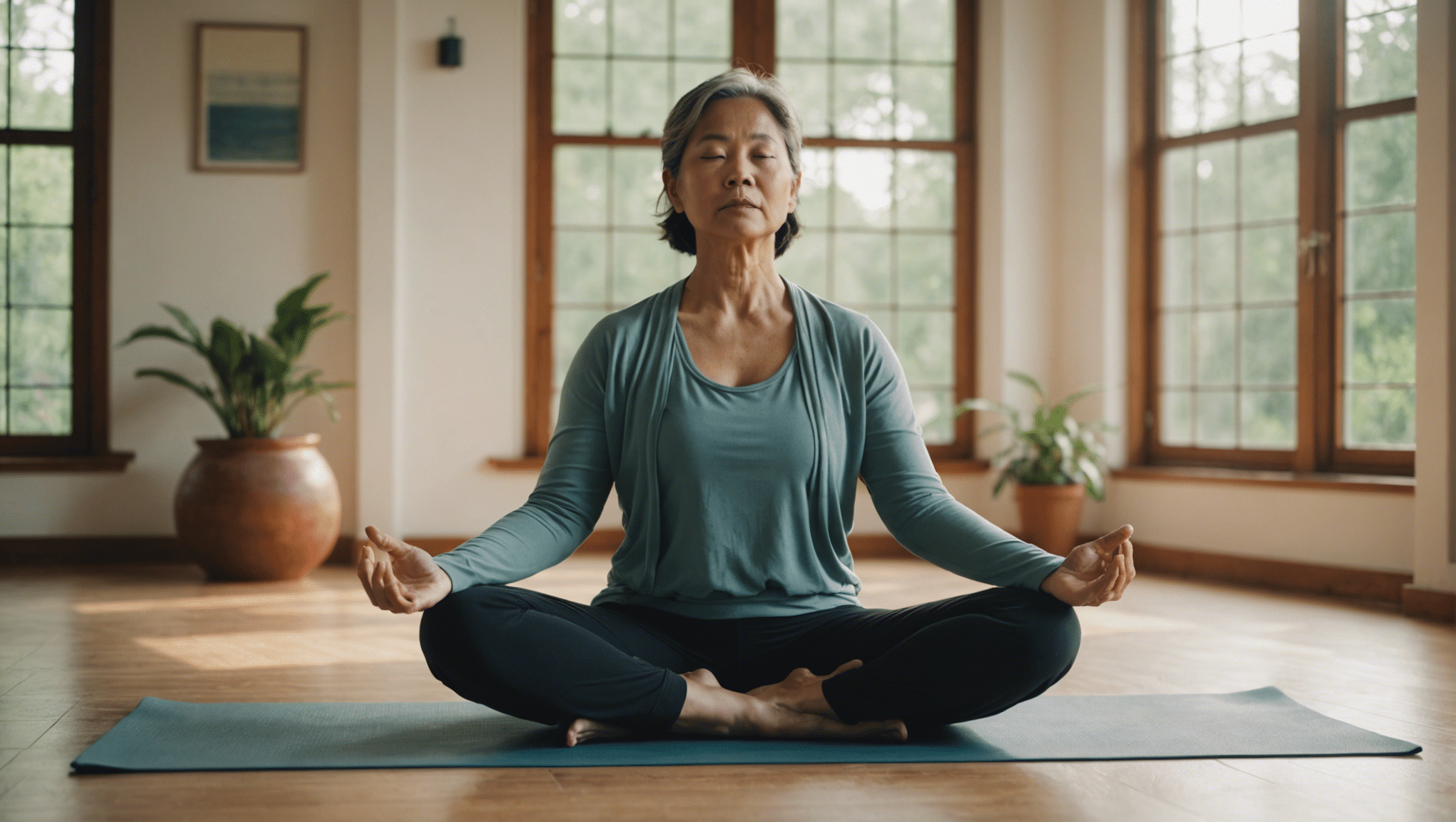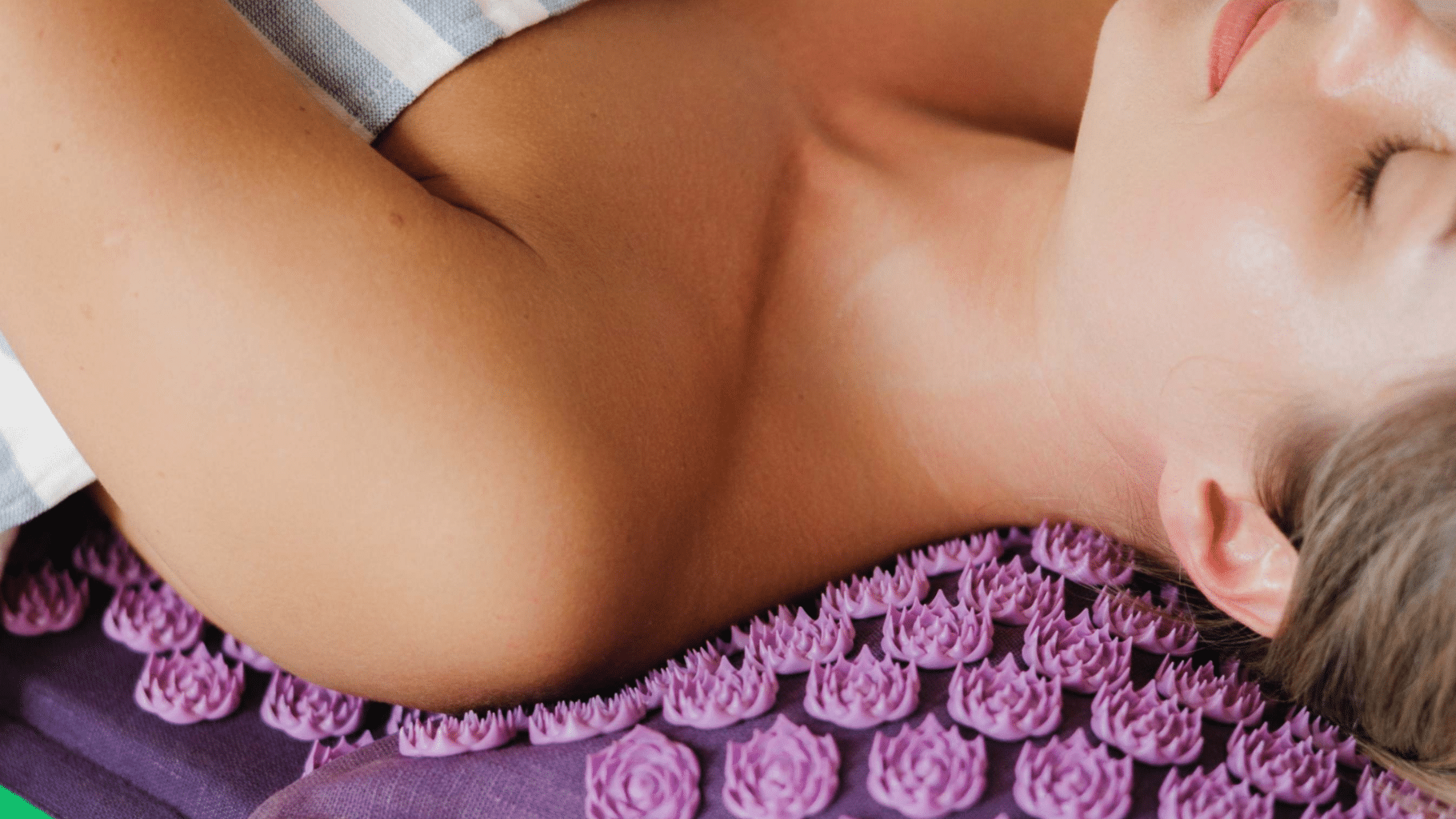Life often feels like a whirlwind of demands, deadlines, and daily chaos. Have you ever felt that way? Take a deep breath and join us in exploring the magnificent world of breathing exercises 1. Yes, that’s right, inhaling and exhaling can transform your life, and we’re here to guide you through it!
What are effective breathing techniques for stress relief?
Effective breathing techniques for stress relief include diaphragmatic breathing, 4-7-8 breathing, and alternate nostril breathing. These methods promote relaxation, reduce anxiety, and enhance overall well-being by slowing the breathing rate and increasing the amount of oxygen intake.
This blog is part of a series on “coping strategies.” The next blog is about cold exposure.
Essential Breathing Techniques for Relaxation and Stress Reduction
- Diaphragmatic Breathing: Focus on engaging the diaphragm to fill the lungs, promoting calmness.
- 4-7-8 Breathing: Inhale for 4 seconds, hold for 7 seconds, exhale for 8 seconds to relieve anxiety.
- Box Breathing: Breathe in, hold, exhale, hold, each for 4 seconds, to increase focus and reduce stress.
- Alternate Nostril Breathing: Alternate breathing through each nostril to balance the body and mind.
- Progressive Relaxation Breathing: Combine deep breathing with progressive muscle relaxation to decrease tension.
- Pursed Lip Breathing: Breathe in through the nose and out through pursed lips to slow breathing, which helps manage panic attacks.
Understanding Stress and Anxiety: Implications for Health and Well-being
Stress and anxiety are more than mere emotions. They can impact both physical and mental well-being. Chronic stress, for example, can lead to high blood pressure, while anxiety may contribute to difficulty breathing. This is where breathing techniques for stress relief come into play, helping to relieve these ailments or improve your sleep.
- High blood pressure: Practicing relaxation through deep breathing can lower blood pressure.
- Sleeping conditions: Breathing exercises can benefit those with insomnia.
Stress is an unavoidable part of life. While a moderate amount can be beneficial, prolonged or chronic stress affects the body and mind. Over time, consistently high stress levels raise cortisol and suppress the immune system, increasing susceptibility to illness and disease. Mentally, stress impairs concentration, memory, and decision-making while fueling anxiety and depression.

Anxiety is characterized by persistent worry and racing thoughts. This state of hyperarousal leads to physical symptoms like muscle tension, headaches, stomach issues, and difficulty sleeping. Left unchecked, anxiety disorders such as panic attacks, phobias, and PTSD can severely impact daily functioning and quality of life.
Finding healthy ways to manage stress and anxiety is critical for both short-term comfort and long-term well-being. While diet, exercise, sleep, and social connection all play a role, breathing techniques offer a fast-acting and easily accessible tool to help restore calm and balance.
The Science of Breathing: How Deep Breathing Impacts the Nervous System
A robust body of scientific evidence demonstrates the close link between breathing patterns and the nervous system. Unlike heart beating or digestion, breathing rate and depth can be voluntarily controlled. Taking advantage of this connection through breathing exercises allows you to directly influence physiological processes like heart rate, blood pressure, and muscle tension.
During stress, people take quick, shallow breaths in the chest, which triggers the sympathetic fight-or-flight response. Slow, controlled deep breathing engages the parasympathetic relaxation response. As you inhale, oxygen levels rise, while exhaling fully clears waste gases like carbon dioxide. Together, this improved gas exchange optimizes oxygen delivery while removing toxins.
Controlled breathing also increases heart rate variability, a key marker of health. This reflects enhanced communication between the heart and brain. Overall, research from peer-reviewed studies and academic institutions provides convincing support for breathwork to alleviate anxiety, boost energy, and enhance focus.
Different Breathing Techniques For Stress Relief
Let’s explore the most important ones briefly below. For an in-depth explanation of each method, click the corresponding links to the articles.
Diaphragmatic Breathing
Also known as belly or abdominal breathing, this technique focuses on filling the lungs fully by contracting the diaphragm rather than breathing shallowly in the chest.
- Sit comfortably with one hand on your upper chest and the other on your stomach.
- Inhale slowly through your nose, feeling your belly push out.
- Purse your lips and exhale slowly until all air is released.
- Repeat for 5-10 breath cycles.
Diaphragmatic breathing increases oxygen absorption while activating the relaxation response. It’s beneficial for reducing blood pressure.
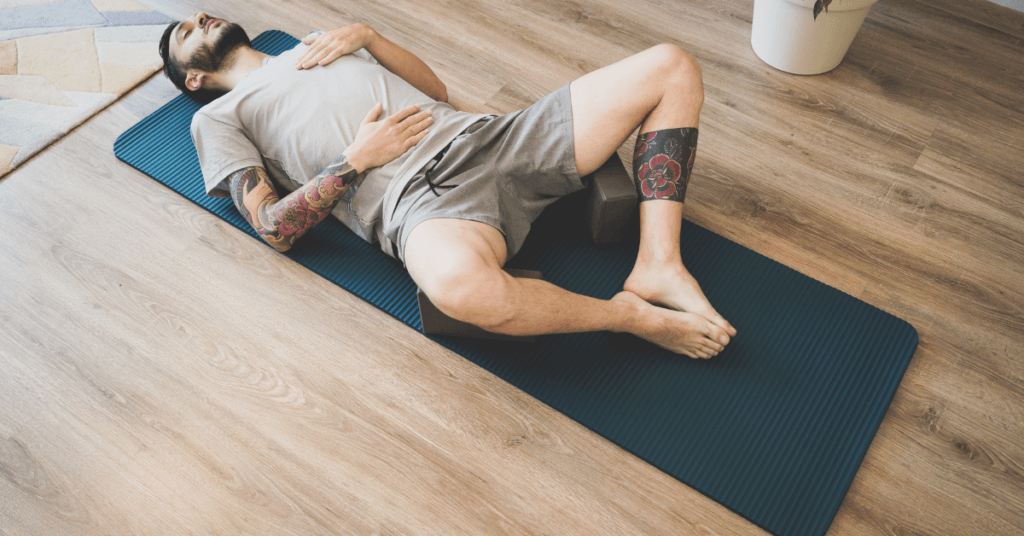
4-7-8 Breathing
Dr. Andrew Weil popularized this simple technique. It’s easy to remember and can be done anywhere.
- Sit upright and exhale completely through your mouth.
- Close your lips and inhale slowly through your nose for a count of 4 seconds.
- Hold your breath for a count of 7 seconds.
- Exhale forcefully through your mouth for 8 seconds, making a whooshing sound.
- Repeat for 4-7 cycles.
The prolonged exhale activates the parasympathetic system, while the counting provides a point of focus. This is excellent for acute stress relief.
Alternate Nostril Breathing
From the yogic practice of pranayama, this breathwork involves closing off one nostril at a time to control airflow.
- Sit comfortably, inhale through the left, and place your right thumb over your right nostril.
- Close the left nostril with your ring finger and lift your thumb to exhale through the right.
- Inhale right, close right, open left, and exhale left.
- Repeat 5-10 cycles, switching starting nostrils halfway through.
Alternate nostril breathing is deeply calming. The concentration required also improves mindfulness. Start with a 3:6:3 second ratio on the inhale, hold, and exhale.
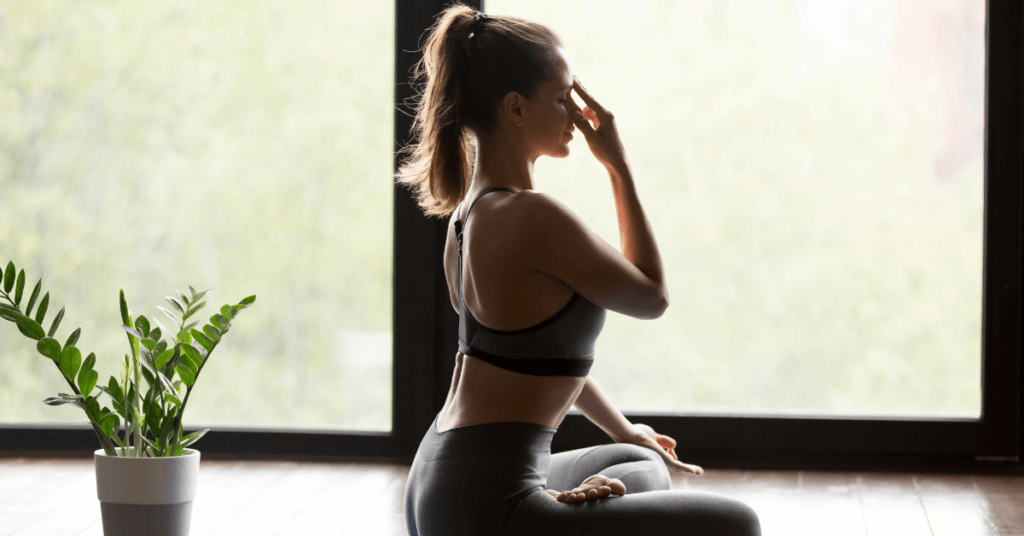
Pursed Lip Breathing
This technique is especially helpful for people with lung conditions like COPD or asthma. It helps control the pace of exhalation.
- Relax your neck and shoulders.
- Inhale slowly through your nose for two counts.
- Pucker your lips like you’re going to whistle.
- Exhale very slowly through pursed lips for 4-6 counts.
- Repeat for several breath cycles.
Pursed lip breathing improves oxygenation and reduces shortness of breath by preventing airways from collapsing. It provides an easy way to pace exhalation.
Lion’s Breath
This energizing breath can counter fatigue or sleepiness in yoga and meditation.
- Sit up tall and inhale deeply through your nose.
- Open your mouth wide, stick out your tongue, and exhale vigorously through your mouth while making a “haa” sound.
- Repeat 5-10 times.
Lion’s breath clears the airways and raises energy levels by infusing oxygen. Its dramatic nature also helps release tension.
Box Breathing
This square breathing technique promotes deep relaxation with equal time spent on each phase.
- Sit upright and exhale completely.
- Inhale slowly through your nose for four counts.
- Hold your breath for four counts.
- Exhale slowly through your mouth for four counts.
- Hold empty for four counts.
- Repeat for 4-5 cycles.
Box breathing establishes a steady, rhythmic pattern. The prolonged exhale triggers relaxation, while the even pacing promotes mindfulness.
Wim Hof Breathing
A cornerstone of the Wim Hof Method, Wim Hof Breathing is a unique combination of controlled hyperventilation followed by breath retention. The technique involves taking 30-40 deep breaths, exhaling fully on the last one, and then holding the breath for as long as possible.
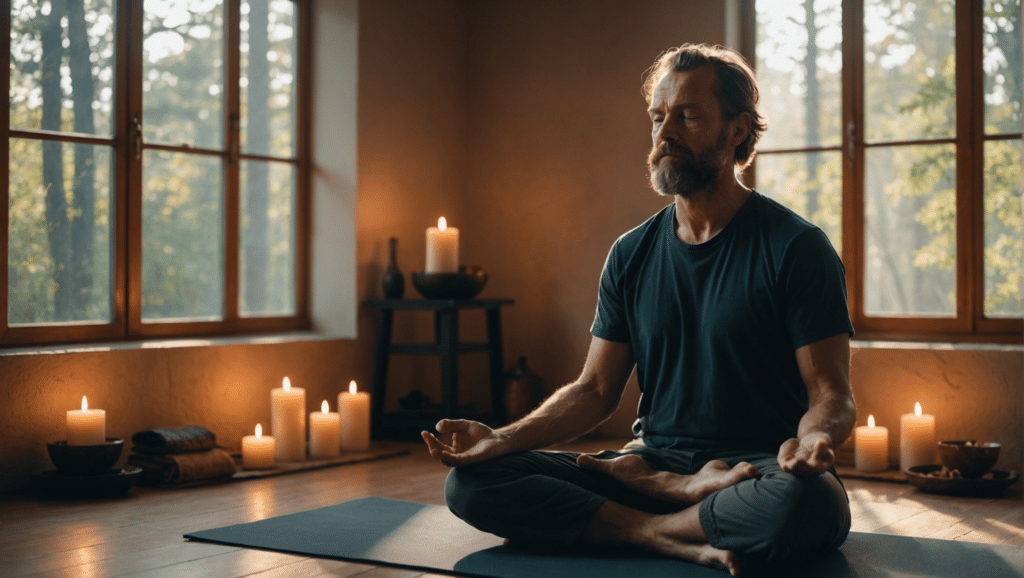
This process is typically repeated for several rounds. Advocates claim it supercharges the body with oxygen, providing benefits like increased energy, reduced stress levels, and enhanced cold tolerance.
Scientific Evidence and Research
Peer-reviewed studies from academic research institutions back all these techniques. The evidence is robust and reliable, from reducing stress and anxiety to improving lung conditions. And no, it’s not just hot air!
Breathing exercises are an effective non-pharmacological intervention for reducing stress and anxiety 2 3 4. A systematic review found that paced breathing has been associated with relaxation and well-being 5.
A 6-week breathing training course was long enough to cause a significant decrease in anxiety levels in healthy adults 2.
Fast-paced breathwork may also offer therapeutic benefits as temporary voluntarily induced stress is also known to be beneficial for health and stress resilience 6.
In two recently published studies, a breathing exercise was found to be most effective for both immediate and long-term stress reduction 7.
Risks and Considerations
Breathing exercises are suitable for most adults without major health conditions. However, there are a few factors to keep in mind:
- Those with respiratory issues like COPD or asthma may need to take special care and avoid exercises that restrict airflow.
- Pregnant women should opt for gentler breathing to avoid dizziness from hyperventilation.
- Anyone with a history of trauma or panic attacks should introduce breathwork slowly and seek guidance.
- Monitor any physical discomfort and adjust or stop an exercise if lightheadedness or tingling occurs.
Start with basic belly breathing for short sessions of 5 minutes and slowly build up from there. Proper guidance can also be helpful when first learning breath techniques.
Personal Thoughts
In my experience, integrating breathing techniques into my daily routine has been transformative. These methods have helped me manage stress and improved my health and mental clarity.
I encourage everyone struggling with stress to explore these breathing techniques. They offer a practical and accessible way to gain control over stress, enhancing both emotional and physical resilience.
Frequently Asked Questions
What is The 4-7-8 Breath Method?
The 4-7-8 breathing technique, also known as the “relaxing breath,” is a simple technique propagated by Dr. Andrew Weil. It’s grounded in pranayama, an ancient Indian practice of ‘regulation of breath.’ The process involves inhaling for four seconds, holding your breath for seven seconds, then exhaling slowly for a count of eight.
What are The 5 Main Breathing Techniques?
You can use multiple breathing techniques, but five notable techniques include diaphragmatic breathing, 4-7-8 breathing, box breathing, lion’s breath, and alternate nostril breathing. These methods help in various ways, such as calming the mind, reducing anxiety, and improving focus and performance.
How to Do The 7-11 Breathing Technique?
The 7-11 breathing technique is where you breathe in for a count of 7 and out for a count of 11. The extended exhalation in this technique encourages full oxygen exchange, slowing down the heartbeat and stabilizing blood pressure. This technique soothes the nervous system, relieves stress, and maintains mental tranquility.
How Do I Master My Breathing?
Mastering your breathing starts with understanding your breath. Start by spending a few minutes each day focusing on your breath, tuning into the sensation of inhaling and exhaling. Practice breathing techniques regularly; the more you practice, the more control you’ll have over your breaths.
How do Breath Exercises work?
Breathing exercises impact our autonomic nervous system, which regulates our heart rate, digestion, respiratory rate, and other automatic functions. These exercises can help switch the system from a stress response to a relaxation response. The result can be reduced anxiety, improved focus, increased relaxation, and other mental health benefits.
- Deep Breathing Exercises & Techniques for Stress Management and Relief (webmd.com)[↩]
- The Effect of Diaphragmatic Breathing on Attention, Negative Affect and Stress in Healthy Adults – PMC (nih.gov)[↩][↩]
- Breathing to reduce stress – Better Health Channel[↩]
- Proper Breathing Brings Better Health – Scientific American[↩]
- How Breath-Control Can Change Your Life: A Systematic Review on Psycho-Physiological Correlates of Slow Breathing – PMC (nih.gov)[↩]
- Effect of breathwork on stress and mental health: A meta-analysis of randomised-controlled trials | Scientific Reports (nature.com)[↩]
- Research: Why Breathing Is So Effective at Reducing Stress (hbr.org)[↩]

